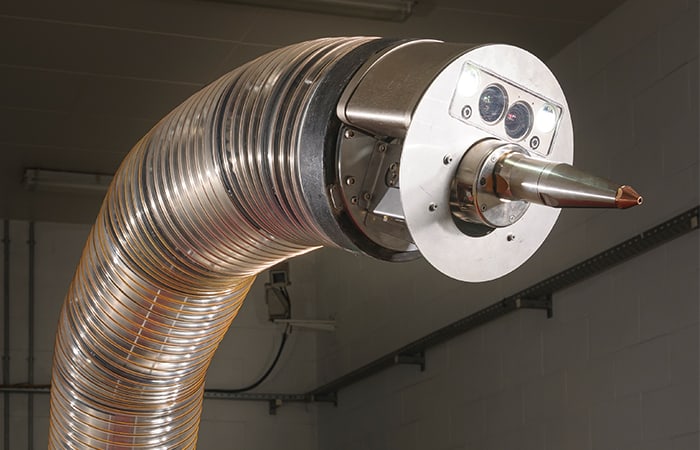Radiation levels inside the giant reprocessing plants at Sellafield in Cumbria are too high for workers to enter safely, even after its post-operational clean-out. So the site’s operator asked industry for ideas to do the work remotely.
Cavendish Nuclear is one of the companies to take up the challenge. The UK’s largest nuclear services business has a long history of working at Sellafield. It understands the radiological hazards and tightly-regulated working practices.
It’s also a subsidiary of the global engineering services business Babcock International Group. This means it can leverage its reach across industry, to collaborate with other companies and adapt technology from other sectors with similar needs for remote, high-tech tooling.
Working alongside Babcock, Cavendish Nuclear searched for the combination of tools and technology capable of being integrated with its own proven nuclear products and deployed in areas of high radiation.

The outcome is the In-Cell Decommissioning System, or IDS. It consists of three key components from different industries:
- The Radscan™ spatial and radiometric scanning system developed by Cavendish Nuclear for remote mapping of contaminated plant.
- A virtual reality interface developed by Babcock International Ltd experts to process the data and enable operators to control the robot from anywhere in the world
- A robotic snake-arm with laser-cutting tools originally developed by OC Robotics.
“We are integrating technologies developed across different sectors of industry to deliver a breakthrough in the reduction of risks to workers, increased productivity, more efficient management of waste, reduced timescales and lower overall costs,” explained Cavendish Nuclear’s head of innovation and technology Tony Burnett.
The innovation in decommissioning technology is being backed by R&D funding from Innovate UK, the UK’s innovation agency, including funding from the Department for Business, Energy and Industrial Strategy and the Nuclear Decommissioning Authority.
An exciting aspect of using 3D models and VR is the possibility of truly remote operability. With today’s IT infrastructure there is no reason why the decommissioning team needs to be in the facility being decommissioned. Potentially, operators in other locations could be defining, downloading and monitoring cutting operations in active cells.
The system has been demonstrated at Cavendish Nuclear’s manufacturing and testing facility at Whetstone, Leicester, just 12 months after its conception, and will now be assessed by Sellafield Ltd to determine whether to use the technology for an active demonstration on a radioactive cell on the Sellafield Site.
The demonstration also gave Cavendish Nuclear the opportunity to showcase IDS and its potential wider application to a number of its UK and international key clients.
This generated a great deal of interest in the technology, its development and its potential wider application. Business leads and opportunities are currently being followed up, with a view to further key client demonstrations and presentations being scheduled in the coming months.
Babcock is the partner of The Engineer’s 2019 Data week
For more information contact
technology@babcockinternational.com
MORE ON NUCLEAR




April 1886: the Brunkebergs tunnel
First ever example of a ground source heat pump?